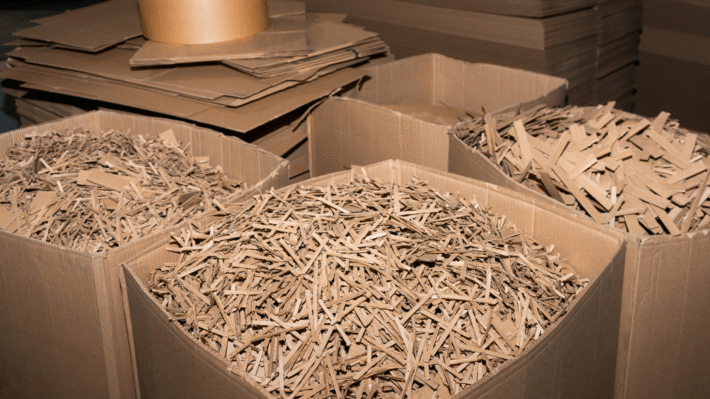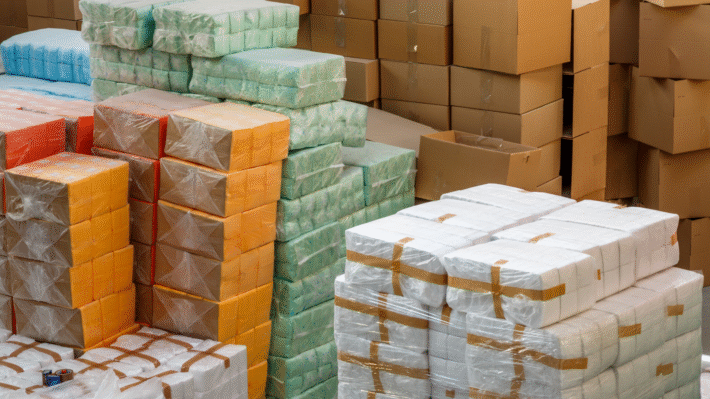The Transformative Potential of Developing Compostable and Bio-based Footwear Alternatives

Brighten up your step while taking care of Mother Earth—let’s talk about biodegradable shoes! Footwear waste has become an increasing environmental concern, but, fear not! We’re about to take a deep dive into the thriving world of circular economy in footwear where waste minimization, reuse, and recycling occur hand in hand to combat this problem. Bring out the compost bin and dig into nature’s brilliant rainbow of bio-based, compostable materials redefining the shoe industry. We’ll also explore the art of designing for circularity and meeting the challenges head-on. Shoes crafted from hemp, bamboo, even mushroom, that will not only soothe your feet, but the planet as well. So, ready to march towards a sustainable future in your biodegradable footwear? Let’s begin this enlightening journey!
Note: Throughout this article our focus will be on driving forward the vision of Circularity, Compostability, and Bio-based Alternatives in the footwear industry!
Circular Economy Principles in Footwear
The concept of a circular economy is disrupting traditional views of production and consumption, and the footwear industry is no exception. A departure from the “take-make-dispose” linear model, it offers a viable counterpoint anchored on principles of waste reduction, reuse, and recycling.
Defining Circular Economy
Key Principles of Circular Economy
Circular economy rests on three key principles: designing out waste and pollution, keeping products and materials in use, and regenerating natural systems. Its emphasis on the extended use of products reduces manufacturing demands and optimizes resources while regenerated natural systems ensure that operations leave a minimal environmental footprint.
Transition Benefits for Footwear Industry
The footwear industry stands to reap expansive benefits from the adoption of circular economy principles. Apart from resource optimization and environmental resilience, circular models can generate new avenues for brand differentiation, forge deeper customer relationships, and unlock cost savings—creating value throughout the production and consumption cycle.
Implementing Circularity
Strategies for Waste Minimization
In adopting circularity, brands have deployed different strategies for waste minimisation. These range from designing shoes for longevity and multiple lifecycles to encouraging recycling. Brands like Nike and Adidas, for instance, have ambitious targets for their take-back initiative, aiming to transform old athletic shoes into materials for brand-new ones.
Reuse and Recycling Practices
Embracing the recycling ethos, some innovative players in the industry are actively driving shoe recycling programs. By retrieving used shoes, they are able to break them down into raw materials and reuse them in the production of new footwear, ensuring that no shoes end up in landfill. Such practices not only contribute to waste elimination but also inspire a robust secondary market for refurbished or pre-owned shoes.
Innovative Bio-Based and Compostable Materials
Biodegradable and compostable materials are transforming the footwear industry, helping it move towards sustainability and circularity. This transition is marked by the exploration of bio-based materials, and the deployment of compostable materials in shoe-making processes, emphasizing the viability of alternative, eco-friendly materials.
Exploring Bio-Based Options
Biodegradable Polymers and Alternatives
In the quest for sustainable footwear, the use of biodegradable polymers like PLA (Polylactic acid) and PHA (Polyhydroxyalkanoates) has been pivotal. These bio-based polymers are derived from renewable biomass resources like corn starch, and microorganisms respectively. When properly composted, these materials break down into CO2, water, and biomass, leaving no harmful residues behind.
Similarly, bio-rubber, derived from the Russian dandelion or Guayule plant, provides an environmentally-friendly alternative to traditional synthetic rubber typically made from petroleum.
Plant-Based Leathers and Textiles
The development of plant-based leathers has also shown noteworthy advancements in sustainable footwear. For instance, mycelium leather, which is made from the roots of mushrooms, provides a robust and compostable alternative to animal leather. Other plant leathers, such as Piñatex (pineapple leather), and apple leather, offer comparable durability and finish.
In the realm of textiles, options like organic hemp, cotton, bamboo, and cork have made their mark due to their ecological properties and renewable nature.
Compostable Materials in Footwear
Research and Development in Soles and Uppers
Recent research and development efforts in the footwear industry are pushing for the implementation of compostable spares in shoe components like soles and uppers.
Brands like Allbirds and Native Shoes, for instance, have initiated use of renewable and compostable materials like sugar cane in soles and plant-based thermoplastic polymers in the shoe uppers, bringing us one step closer to 100% compostable shoes.
Compatibility with Home Composting Systems
Notably, the significance of bio-based, compostable footwear materials goes beyond their production process. Home compostability adds another weight to their environmental value. Here is the objective: A shoe with compostable components should, in theory, decompose within a home composter, turning into nutrient-rich compost within a few months.
Solutions like these not only address the growing demand for sustainable footwear but also put in perspective the impressive strides the footwear industry is making toward environmental stewardship. From developing plant-based leathers to pioneering home-compostable shoes, the industry is truly transforming its practices, inching us closer to a more sustainable future, one step at a time.
Designing Shoes for Circularity and End-of-Life
As the consciousness of consumers evolves towards the impact of what they purchase, footwear designers are increasingly favoring innovation in the creation of designs that are mindful of their products’ lifecycle. The drive for circularity has induced the paradigm shift from linear “take-make-waste” models, focused towards designs that facilitate circularity. Two dimensions at the core of these innovative design approaches are the concept of modular and monomaterial construction and the use of non-toxic adhesives.
Innovative Design Approaches
Modular and Monomaterial Construction
Modular design implies creating shoes with a construction that allows individual parts to be replaced, without having to discard the whole shoe. This design approach not only extends the lifespan of the footwear but also reduces waste generation. Brands are already leveraging this principle like Adidas Futurecraft.Loop, a running shoe that can be entirely reused for the production of new shoes.
The push for monomateriality, on the other hand, advocates for using one type of material throughout the shoe. The advantage of a monomaterial strategy is that it simplifies the recycling process by eliminating the need to separate different materials, thus promoting the shoe’s recyclability.
Use of Non-Toxic Adhesives
The role of adhesives can’t be underestimated in shoe construction. However, many traditional adhesives used in shoe manufacturing contain toxic chemicals harmful for the environment. There’s a growing movement towards the usage of non-toxic, water-based adhesives that offer durability without the environmental damage. Companies like Veja and AlgiKnit are pioneering these efforts, setting industry standards across the board.
End-of-Life Strategies
Deciding what happens at the end of a shoe’s lifecycle has become equally important as its design and production. The need for effective end-of-life strategies is thus incredibly pertinent.
Take-Back and Recycling Programs
Footwear brands are developing take-back programs, encouraging consumers to return their used shoes once they’ve reached their end of life. These programs effectively facilitate the collection of used shoes, which can be repaired and donated, or broken down and incorporated into the manufacturing of new products. Timberland’s “Second Chance” program is a case in point, which aims to give shoes another life by repairing and donating them to communities in need.
Digital Product Passports for Traceability
Digital product passports are emerging as a tool to trace the lifecycle of a product from production to end-of-life. They host details from material composition, origin, recycling instructions, to its previous owners. This technology holds promise to increase transparency and facilitate better recycling processes. The European Union is already discussing regulations to make digital product passports compulsory for certain product groups as a step towards a circular economy.
In conclusion, the climate crisis demands more than ever, footwear that is consciously designed, keeping in mind its lifecycle right from sourcing of raw materials to its final disposal. The undeniable blend of sustainability and design is carving the path for shoes that are kneaded with care, empathy and responsibility towards preserving our planet.
Overcoming Challenges in Sustainable Footwear
Transitioning to sustainable footwear involves overcoming a plethora of challenges. Two significant hurdles include balancing between the footwear’s durability and its compostability and successfully educating consumers about biodegradable footwear and facilitating their proper disposal.
Balancing Durability and Compostability
Simply producing a shoe from biodegradable materials isn’t sufficient. For widespread consumer adoption, these materials must also be robust enough to withstand everyday wear and tear. This intricate balance between durability and compostability presents one of the industry’s greatest challenges.
Innovations in Wear-Resistant Bio-Materials
The race to create wear-resistant bio-materials has spearheaded numerous innovations. For instance, researchers are blending biopolymers like Polylactic Acid (PLA) or Polyhydroxyalkanoate (PHA) with natural or synthetic fabrics to increase toughness. These innovative materials exhibit strength comparable to traditional materials while retaining biodegradability. Many footwear companies are actively exploring such materials to improve the durability of their sustainable products.
Educating Consumers and Facilitating Proper Disposal
Another major hurdle in the path towards sustainable footwear is consumer education. Despite growing environmental awareness, many consumers still have limited knowledge about sustainable footwear and how to dispose of these products correctly.
Challenges in Consumer Education
While many are aware of the harmful environmental impact of fast fashion, knowledge regarding the implications of footwear waste is not as widespread. To fill this gap, companies, government bodies, and NGOs are undertaking initiatives to increase consumer awareness about the environmental footprint of their footwear. They are leveraging channels like social media, blogs, and experiential marketing to help consumers recognize the significance of choosing and properly disposing of sustainable footwear.
Effective Disposal and Return Programs
A key to closing the loop in a circular economy for footwear is devising effective disposal and return programs. For compostable shoes to have the desired environmental impact, they must be composted under the right conditions. Brands are thus creating take-back programs wherein used shoes are collected, disassembled, and composted in controlled environments. Some are even providing incentives such as discounts on future purchases encouraging consumers to return their end-of-life shoes.
Through sustained efforts, the footwear industry can effectively combat these challenges, paving the way towards a more sustainable future. It not only requires technological advancements in materials and design but also active collaboration between brands, policy-makers, recycling organizations, and most importantly – consumers.
Collaborations and Partnerships for Circular Footwear
Creating revolutionary, biodegradable shoes doesn’t happen in a vacuum; it calls for extensive partnerships and collaborations among industry stakeholders. Through joint efforts, we can shift the footwear industry towards a more sustainable future.
Engaging with Material Innovators
Partnering with Startups and Bio-Material Companies
One crucial element is partnering with startups and bio-material companies that push the boundaries of innovation. These entities bring fresh perspectives and often have more agility to explore, test, and implement new ideas. Startups such as Dimpora have developed bio-based membranes for outdoor footwear, while bio-material companies like Bioserie have focused on bio-plastic components for children’s shoes. Engaging these innovators isn’t just good for sustainability—it’s also a strategic business move.
Influencing Policy and Industry Standards
Collaboration with Government and Industry Alliances
The path to circular footwear isn’t only about material innovation—it’s also about policy and standards. Collaborations with government bodies and industry alliances are critical for systemic change. These partnerships can shape regulations, set industry norms, and push for corporate accountability in sustainability. Companies like Adidas and Allbirds have shown leadership in this setting, actively working with the German government and various industry alliances for the development of sustainable footwear standards.
Promoting Composting Programs
Another step forward is the promotion of composting programs. By facilitating consumer access to composting facilities and home composting solutions, we can help ensure that sustainable shoes are disposed of properly at the end of their life, completing the circular cycle. While these programs may take time and resources to roll out, the environmental benefits and consumer goodwill generated can be considerable, as seen with initiatives such as the Zer0 Waste initiative by Native Shoes.
In conclusion, collaboration is key in the journey towards circular footwear. With the right partnerships and policy influence, the dream of a sustainable shoe revolution becomes a reality.



